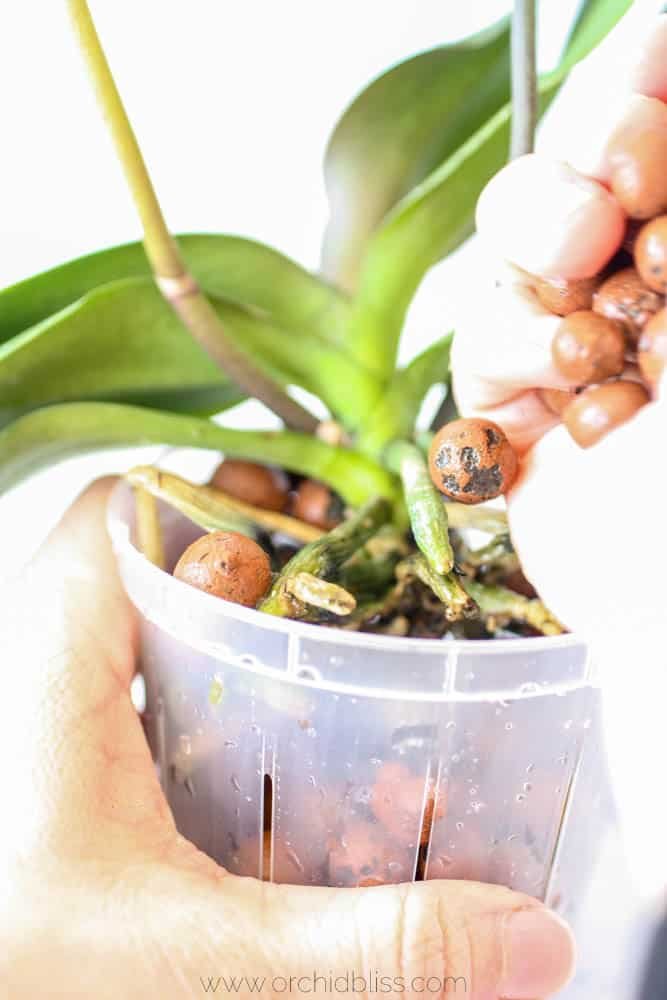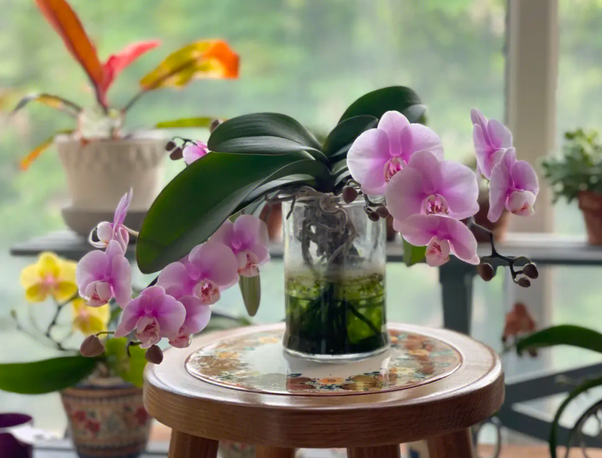Unlock the potential of hydroponic orchid culture by exploring innovative techniques such as aeroponics or nutrient film systems, optimizing nutrient solutions, and tailoring environmental conditions to achieve superior orchid growth and bloom beyond traditional pot cultivation methods.
From Seed to Bloom: The Journey of Hydroponic Orchid Cultivation
Hydroponic orchid cultivation refers to the practice of growing orchids without soil, using a nutrient-rich water solution instead. This method of cultivation has gained popularity in recent years due to its numerous benefits and advantages over traditional soil-based cultivation. Hydroponic orchid cultivation allows for greater control over growing conditions, increased yield and growth rate, reduced water usage, and fewer pest and disease problems.
The history of hydroponic orchid cultivation can be traced back to ancient civilizations such as the Aztecs and Babylonians, who used hydroponics to grow crops in areas with poor soil quality. However, it was not until the 19th century that hydroponics gained recognition as a viable method of cultivation. In the 1930s, researchers began experimenting with hydroponics for orchid cultivation, and since then, it has become a popular technique among orchid enthusiasts and commercial growers alike.
The benefits of hydroponic orchid cultivation are numerous. One of the main advantages is the reduced water usage compared to traditional soil-based cultivation. In a hydroponic system, water is recirculated and reused, minimizing waste and conserving this precious resource. Additionally, hydroponic orchids tend to have a higher yield and growth rate compared to those grown in soil. This is because the plants have direct access to all the nutrients they need, resulting in healthier and more vigorous growth.
Furthermore, hydroponic orchids are less susceptible to pest and disease problems, as the absence of soil eliminates many common pathogens. Finally, hydroponic systems allow for year-round cultivation, regardless of climate or season, making it an ideal choice for those who want to enjoy fresh orchids all year long.
Advantages of Hydroponic Orchid Cultivation
Reduced water usage is one of the key advantages of hydroponic orchid cultivation. Traditional soil-based cultivation requires a significant amount of water, as the soil needs to be constantly moist to provide the plants with the necessary nutrients. In a hydroponic system, water is recirculated and reused, resulting in a significant reduction in water usage. This not only helps conserve water but also reduces the cost associated with irrigation.
Another advantage of hydroponic orchid cultivation is the increased yield and growth rate. In a hydroponic system, the plants have direct access to all the nutrients they need, resulting in faster and healthier growth. This leads to higher yields and more abundant blooms, making hydroponic orchids a popular choice among commercial growers.
Hydroponic orchids also have fewer pest and disease problems compared to those grown in soil. Soil-borne pathogens and pests are eliminated in a hydroponic system, reducing the risk of infestation or disease outbreak. Additionally, the controlled environment of a hydroponic system allows for better monitoring and prevention of pest and disease problems.
One of the most significant advantages of hydroponic orchid cultivation is the ability to grow year-round. Traditional soil-based cultivation is often limited by climate and seasonality, making it challenging to grow orchids outside their natural habitat. With hydroponics, growers can create an optimal environment for orchids regardless of the external conditions. This allows for year-round cultivation and ensures a constant supply of fresh orchids.
Furthermore, hydroponic orchid cultivation provides greater control over growing conditions. Growers can adjust factors such as nutrient levels, pH, temperature, and lighting to create an ideal environment for orchid growth. This level of control allows for better customization and optimization of growing conditions, resulting in healthier and more productive plants.
Choosing the Right Orchid Species for Hydroponic Cultivation
When selecting orchid species for hydroponic cultivation, there are several factors to consider. First and foremost, it is essential to choose orchids that are well-suited for hydroponic growing conditions. Some orchid species are more adaptable to hydroponics than others, so it is important to do thorough research and choose species that have been successfully grown hydroponically.
Popular orchid species for hydroponic cultivation include Phalaenopsis, Dendrobium, Cattleya, and Vanda. These species have been proven to thrive in hydroponic systems and are widely available in the market. They also offer a wide range of colors and flower shapes, making them popular choices among orchid enthusiasts.
On the other hand, there are certain orchid species that are not suitable for hydroponic cultivation. These include terrestrial orchids that require a specific type of soil or symbiotic relationship with fungi. Additionally, some orchids have specific temperature or humidity requirements that may not be easily met in a hydroponic system. It is important to avoid these species when choosing orchids for hydroponic cultivation.
Preparing the Hydroponic System for Orchid Cultivation
There are several types of hydroponic systems that can be used for orchid cultivation. The choice of system depends on factors such as space availability, budget, and personal preference. Some common types of hydroponic systems for orchid cultivation include nutrient film technique (NFT), deep water culture (DWC), and drip irrigation.
Regardless of the type of system chosen, there are certain components that are essential for a successful hydroponic setup. These include a reservoir or tank to hold the nutrient solution, a pump to circulate the solution, a growing medium or substrate to support the plants, and a lighting system to provide the necessary light energy for photosynthesis.
Setting up a hydroponic system for orchid cultivation involves several steps. First, the reservoir or tank should be filled with the appropriate nutrient solution. The pH and nutrient levels of the solution should be adjusted to the optimal range for orchid growth. Next, the pump should be installed and connected to the system to circulate the nutrient solution. The growing medium or substrate should be placed in the growing containers or trays, and the orchids can then be transplanted into the system.
Seed Selection and Germination
Seed selection is an important step in hydroponic orchid cultivation. It is essential to choose high-quality seeds from reputable sources to ensure successful germination and healthy plant growth. When selecting seeds, look for those that are fresh, viable, and disease-free.
Germinating orchid seeds in a hydroponic system requires careful attention to detail. The seeds should be sterilized before germination to prevent contamination and disease. This can be done by soaking the seeds in a diluted bleach solution or by using commercial seed sterilization products.
Once sterilized, the seeds can be placed in a germination medium or substrate in a sterile container. The container should be covered to maintain high humidity levels, as orchid seeds require a humid environment for germination. The temperature should also be kept within the optimal range for the specific orchid species being grown.
Successful seed germination in a hydroponic system requires patience and attention to detail. It is important to monitor the moisture levels, temperature, and humidity regularly to ensure optimal conditions for germination. Additionally, proper lighting is crucial for seedling development, so make sure to provide adequate light intensity and duration.
Nutrient Management in Hydroponic Orchid Cultivation
Nutrient management is a critical aspect of hydroponic orchid cultivation. Orchids require specific nutrients in specific ratios for healthy growth and development. These essential nutrients include nitrogen, phosphorus, potassium, calcium, magnesium, and trace elements such as iron, manganese, zinc, and copper.
There are several types of nutrient solutions that can be used in hydroponic orchid cultivation. These include liquid nutrient solutions, powdered nutrient mixes, and organic nutrient solutions. The choice of nutrient solution depends on factors such as budget, availability, and personal preference.
Nutrient management techniques in hydroponic orchid cultivation involve monitoring and adjusting the nutrient levels in the solution. This can be done by regularly testing the pH and nutrient levels of the solution and making appropriate adjustments. It is important to maintain the pH within the optimal range for orchid growth, as deviations can lead to nutrient deficiencies or toxicities.
Additionally, it is important to provide a balanced nutrient solution that meets the specific needs of the orchids being grown. This can be achieved by following a nutrient schedule or using commercial nutrient formulations specifically designed for orchids. Regular monitoring and adjustment of the nutrient solution will ensure that the orchids receive all the necessary nutrients for healthy growth.
Lighting and Temperature Requirements for Orchid Growth
Lighting and temperature are crucial factors in orchid growth and development. Orchids require specific lighting conditions to carry out photosynthesis and produce energy for growth. They also have specific temperature requirements that must be met for optimal growth.
Optimal lighting conditions for orchids vary depending on the species being grown. Most orchids require bright but indirect light, as direct sunlight can scorch their leaves. In a hydroponic system, artificial lighting is often used to provide the necessary light energy for photosynthesis. LED grow lights are a popular choice among hydroponic orchid growers, as they are energy-efficient and can be customized to provide the specific light spectrum required by orchids.
Temperature requirements for orchids also vary depending on the species. Most orchids prefer temperatures between 60°F (15°C) and 80°F (27°C). It is important to maintain a consistent temperature within this range to ensure optimal growth and flowering. Fluctuations in temperature can stress the plants and lead to poor growth or flower drop.
To maintain optimal lighting and temperature conditions in a hydroponic system, it is important to regularly monitor these factors and make appropriate adjustments. This can be done by using a thermometer and light meter to measure the temperature and light intensity in the growing area. If necessary, supplemental heating or cooling can be used to maintain the desired temperature range.
Transplanting and Repotting Orchids in Hydroponic Systems
Transplanting and repotting orchids in a hydroponic system is an important aspect of orchid cultivation. Over time, orchids may outgrow their containers or need fresh growing medium to support their growth. It is important to recognize the signs that an orchid needs to be transplanted and follow the proper steps for successful transplantation.
Signs that an orchid needs to be transplanted include overcrowding of roots, poor growth or flowering, or the presence of pests or diseases. If any of these signs are observed, it is time to transplant the orchid into a larger container or replace the growing medium.
When transplanting an orchid in a hydroponic system, it is important to handle the plant with care to avoid damaging the roots. The old growing medium should be gently removed, and any dead or damaged roots should be pruned. The orchid can then be placed in a new container with fresh growing medium or substrate.
It is important to provide proper post-transplant care to ensure the success of the transplantation. This includes maintaining high humidity levels, providing adequate light intensity, and adjusting the nutrient solution as needed. Regular monitoring of the plant’s progress will help identify any issues early on and allow for timely intervention.
Common Challenges Faced in Hydroponic Orchid Cultivation
While hydroponic orchid cultivation offers numerous benefits, it also comes with its fair share of challenges. Common challenges faced in hydroponic orchid cultivation include pest and disease problems, nutrient deficiencies and toxicities, and environmental challenges.
Pest and disease problems can occur in hydroponic systems, although they are generally less common compared to soil-based cultivation. Common pests that can affect hydroponic orchids include aphids, spider mites, and thrips. Diseases such as root rot and fungal infections can also occur if the growing conditions are not properly maintained. Regular monitoring and preventive measures such as proper sanitation and pest control will help minimize these issues.
Nutrient deficiencies and toxicities can also occur in hydroponic orchid cultivation. Orchids require specific nutrient levels to thrive, and deviations from these levels can lead to nutrient imbalances. Common nutrient deficiencies in orchids include nitrogen, phosphorus, and iron deficiencies. On the other hand, nutrient toxicities can occur if the nutrient solution is too concentrated or if certain elements are present in excess. Regular monitoring of the nutrient solution and adjustment of nutrient levels will help prevent these issues.
Environmental challenges such as temperature fluctuations or inadequate lighting can also affect hydroponic orchid cultivation. Orchids are sensitive to changes in temperature and light intensity, so it is important to maintain a consistent environment for optimal growth. This can be achieved by using supplemental heating or cooling, adjusting the lighting system, or providing shading when necessary.
Harvesting and Post-Harvest Care of Hydroponic Orchids
Knowing when to harvest an orchid is crucial for ensuring the best quality blooms. Signs that an orchid is ready for harvest include fully opened flowers, vibrant colors, and a strong fragrance. It is important to harvest the orchid at the right time to maximize its vase life and prevent premature wilting.
When harvesting an orchid, it is important to use clean and sharp tools to avoid damaging the plant or introducing pathogens. The stem should be cut at an angle, and any excess leaves or buds should be removed. The harvested orchid can then be placed in a vase or container with clean water and a floral preservative to prolong its vase life.
Post-harvest care of hydroponic orchids involves providing the necessary conditions to maintain their freshness and beauty. This includes placing the orchids in a cool and well-ventilated area away from direct sunlight or drafts. The water in the vase should be changed regularly, and any wilted or damaged flowers should be removed to prevent the spread of disease.
Additionally, it is important to provide proper nutrition to the cut orchids to prolong their vase life. Commercial floral preservatives can be used to provide the necessary nutrients and inhibit bacterial growth. Regular monitoring of the orchids’ condition will help identify any issues early on and allow for timely intervention.
Future Prospects of Hydroponic Orchid Cultivation
The future prospects of hydroponic orchid cultivation are promising, with advancements in technology and increased adoption of this method of cultivation. As technology continues to evolve, new innovations in hydroponic systems, lighting, and nutrient management will further enhance the efficiency and productivity of hydroponic orchid cultivation.
Advancements in hydroponic technology, such as automated systems and remote monitoring, will make it easier for growers to manage their orchid crops. These technologies will allow for better control over growing conditions and more efficient use of resources.
Additionally, advancements in lighting technology, such as LED grow lights with customizable light spectra, will provide growers with more precise control over the growth and development of orchids. LED grow lights can be tailored to emit specific wavelengths of light that are optimal for orchid growth, promoting healthier plants and potentially increasing yields. This level of customization allows growers to mimic natural sunlight conditions and adjust lighting parameters to suit the specific needs of different orchid varieties
. Furthermore, LED grow lights are energy-efficient and have a longer lifespan compared to traditional lighting options, reducing energy costs and maintenance efforts for growers. Overall, these advancements in lighting technology will greatly enhance the cultivation of orchids, enabling growers to achieve higher quality crops with greater ease and efficiency.
Originally posted 2024-01-17 10:58:52.






